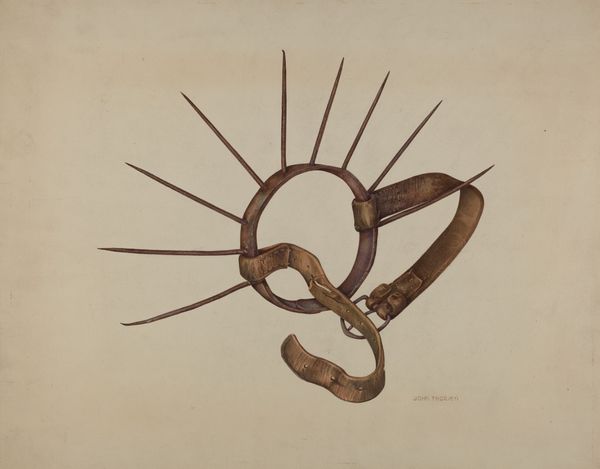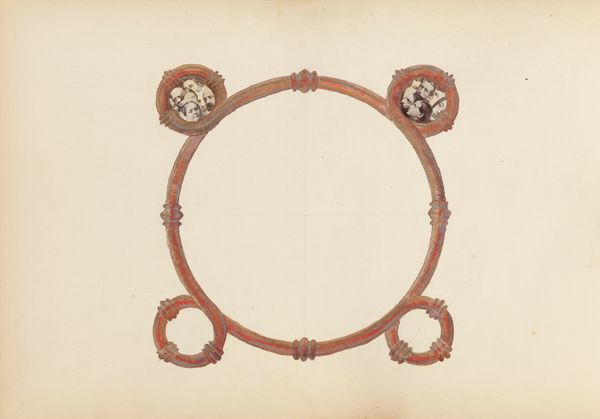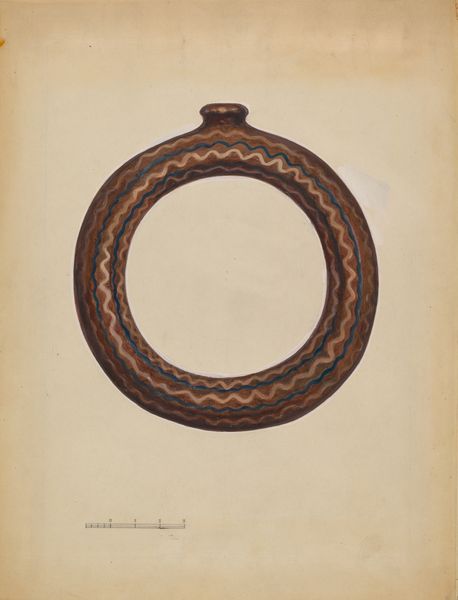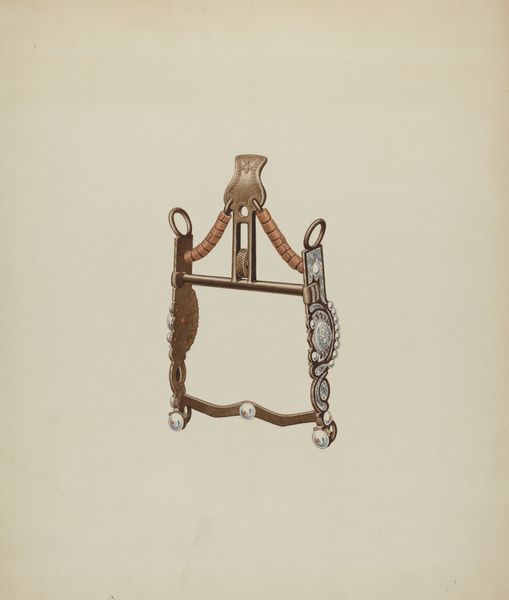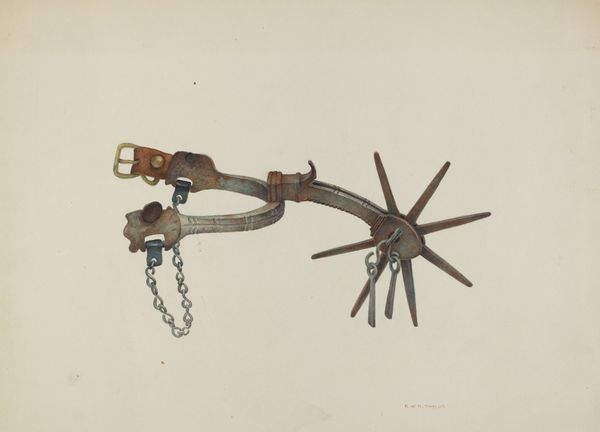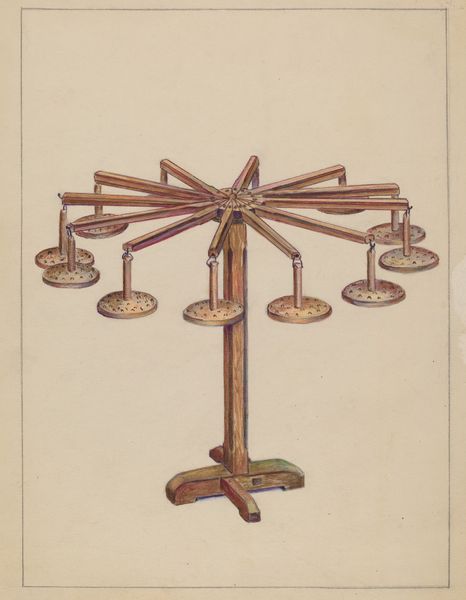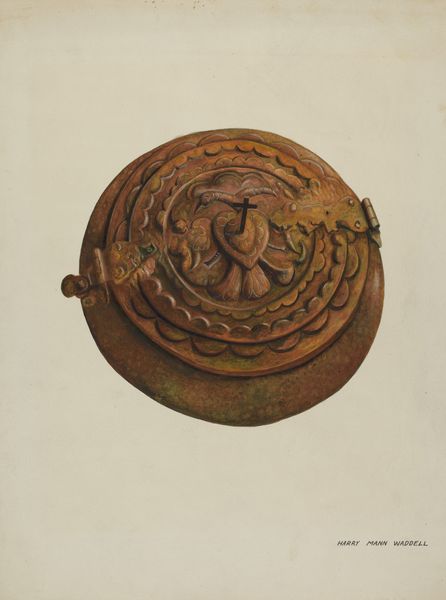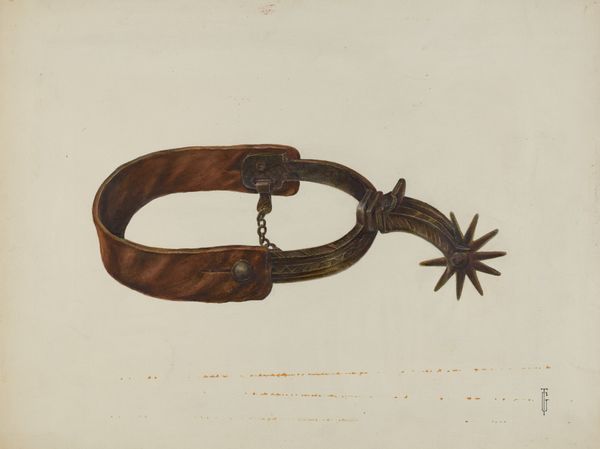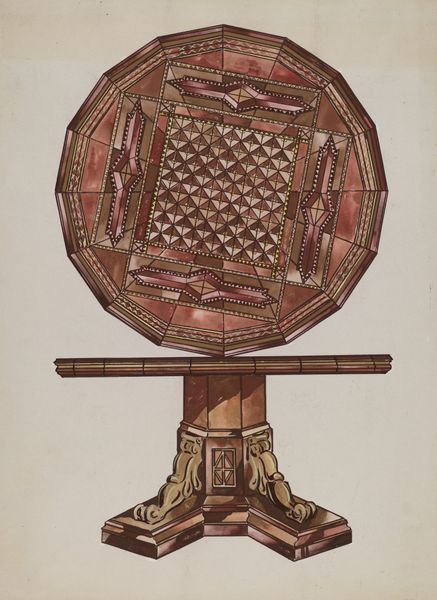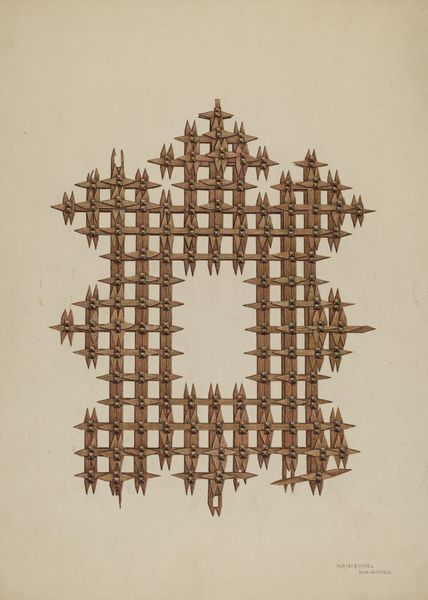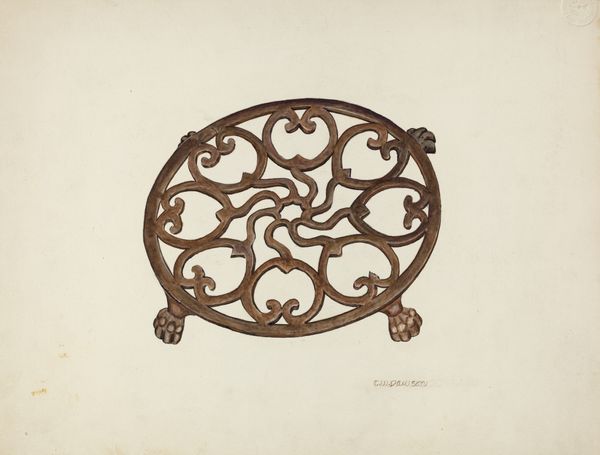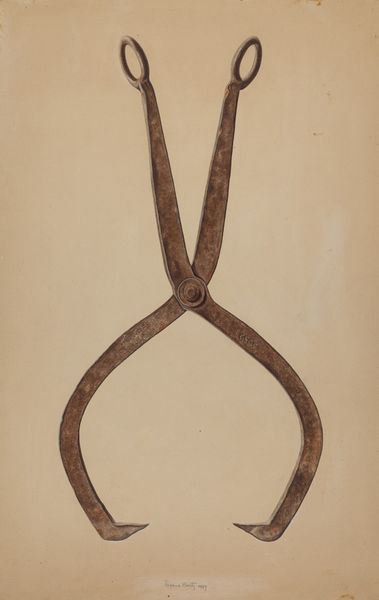
watercolor
#
watercolor
#
coloured pencil
#
watercolor
Dimensions: overall: 35.7 x 25.1 cm (14 1/16 x 9 7/8 in.) Original IAD Object: 15" high; 15" wide
Copyright: National Gallery of Art: CC0 1.0
Curator: At first glance, it feels both functional and… some-how vulnerable. Editor: We are looking at a piece entitled "Indian Snow Shoe," dating from around 1937. It's rendered with watercolor and drawing, plus maybe coloured pencil too, capturing a Native American snowshoe. It seems so unassuming but these items meant survival in a harsh climate. Curator: Vulnerable isn't quite right… fragile is closer to how it makes me feel, especially given what I know about the time period, when native cultural objects were often collected as trophies. Editor: Yes, there's definitely that tension, that contrast, there. Focusing on the form itself, the circular shape likely represents wholeness, a connection to nature’s cycles, the Earth and sky, which would be in stark contrast with Western notions of utility. Curator: That reading connects strongly to how indigenous artifacts were—and in many ways still are—displayed and commodified, reduced to purely functional items rather than cultural objects that embodied rich spiritual meaning. What the West called "artifacts" were understood to be powerful tools of representation for those who created them, weren't they? Editor: Exactly! And let's also consider the materials themselves, rendered here with watercolor. We see the wood frame bound together with what looks like sinew or rawhide. Those elements, while simple, held profound importance, derived from the animals and plants of the local ecosystem, imbuing the snowshoe with a tangible sense of place and resourcefulness. A reminder that culture, survival and identity are inextricably linked to location. Curator: So it becomes more than just transportation across the snow. It transforms into a symbol of adaptability and resilience… Editor: ...carrying the weight of cultural endurance against the forces of colonization. A single footprint through time, perhaps? Curator: I think that's spot on. And for me, remembering the period in which this image was captured helps us appreciate what the artist has done, preserving cultural objects that were—are—at risk.
Comments
No comments
Be the first to comment and join the conversation on the ultimate creative platform.
